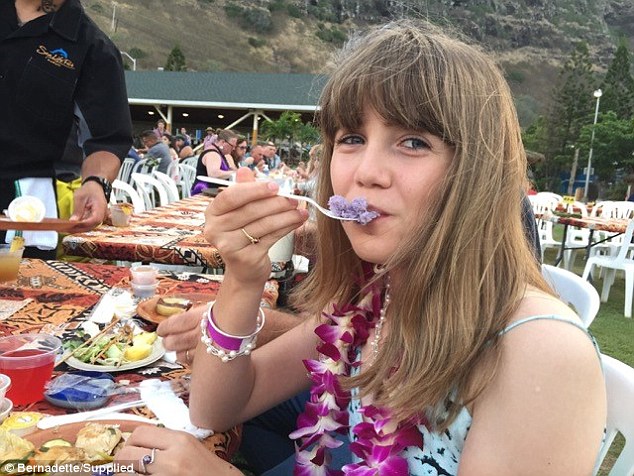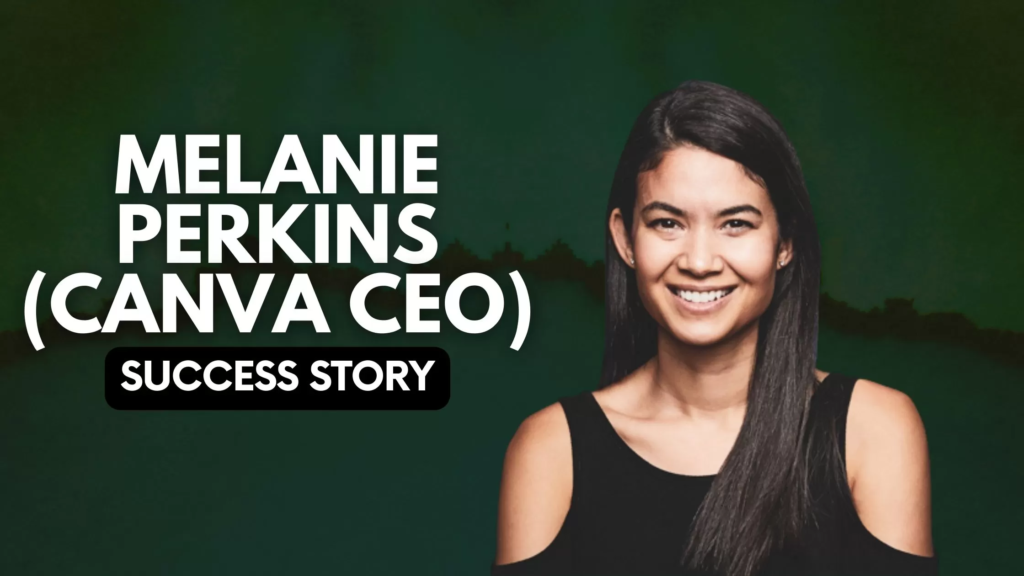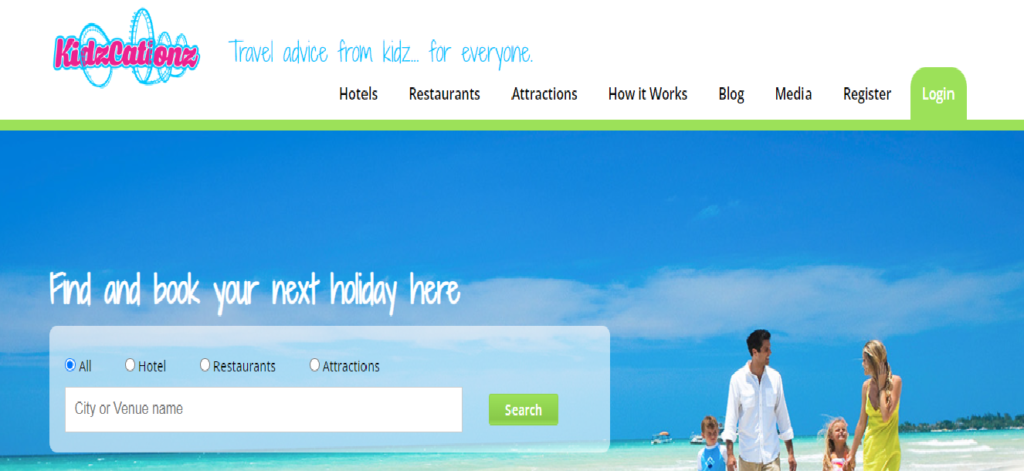The post At 12: How an Australian Girl Became the World’s Youngest Entrepreneur appeared first on TheAussieway.
]]>
Australia has become a hub for any young entrepreneur who wishes to reshape industries and redefine success. From tech startups to retail innovations, these young minds prove that age is no barrier to success.
The best-known young entrepreneurs we can name were Mark Zuckerburg of Facebook and Microsoft’s Bill Gates, who became self-made billionaires at ages 23 and 21, respectively. However, this is a trend that is becoming more and more common.
It’s a prevalent fallacy (and perhaps an excuse for some) that successful entrepreneurship takes years of hard work, long hours, and vast experience to develop. However, an increasing number of aspiring young entrepreneurs are demonstrating that neither is necessary in order to launch a lucrative endeavour. Before they have even graduated high school, this burgeoning group of aspiring young entrepreneurs starts firms from their bedrooms.
One of the most notable names in Australian entrepreneurship is Nick Molnar, co-founder of Afterpay, \Starting by selling jewelry on eBay, Nick transformed his entrepreneurial spirit into a billion-dollar enterprise, revolutionizing the buy-now-pay-later sector.
Similarly, Lucy Liu, co-founder of Airwallex, has made significant strides in the fintech industry. Her company facilitates seamless international transactions for businesses, showcasing the global impact of young Australian entrepreneurs.
Consider Zoe Sugg, the founder of Summly, who at the age of 17 sold her news app to Yahoo for a cool $30 million. The British beauty blogger, who started her own YouTube channel in 2009 and now reportedly makes $100,000 per month, and after Australian entrepreneur, Melanie Perkin’s Journey From A Design Teacher To An Entrepreneur, a wave of the so-called “startup generation” has emerged, which has inspired many Australian small businesses. Rather than partaking in the usual teen activities, these young entrepreneurs are well on their way to earning their first million, demonstrating that there is no better time than the present to realize your entrepreneurial aspirations.
In the tech space, Paul Stovell founded Octopus Deploy in 2011, providing innovative deployment solutions for software developers worldwide. His journey exemplifies the technical prowess and entrepreneurial acumen present among Australia’s youth.
Being a free-thinking Australian entrepreneur has many fantastic benefits, one of which is the ability to discover inspiration anywhere. Inspiration for a brilliant idea might strike anywhere and at any time, but it only succeeds if you’re paying attention and setting yourself up for success.
Similarly, 12-year-old “Bella Tipping” found out that hotels aren’t really kid-focused and primarily care about their adult guests when on a family vacation in the USA.
“Mum was filling out a TripAdvisor review and she liked a hotel where we had stayed and gave it a great review, but I really didn’t like it at all as it was so adult-focused,” she says.
Bella Tipping’s stay at certain hotels gave her the impression that most hotels didn’t take children into account while providing meals and housing. Bella Tipping launched Kidzcationz.com in 2015 with the help of her mother and web developers after coming to the conclusion that most kids probably go through this whilst on vacation.
Bella Tipping: Pioneering Youg Innovation With Kidzcationz
It’s kind of like a kid-friendly TripAdvisor and Expedia combined. Kidzcationz is a vacation review website geared for children, allowing them to assess hotels, restaurants, and attractions based on how well they serve their needs, not their parents. Bella dreams of the day when, no matter who is paying for the vacation, all hotels will treat children’s visitors the same as adults.
Children can visit Kidzcationz, select a location, and evaluate or rate it in addition to reading reviews about the location made by other children. Kidzcationz was designed by Bella Tipping with kids in mind; to ensure the safety of her young users online, the website allows them to browse using avatars that don’t require any personal information or images.
How It Started
In order to turn her entrepreneurial vision into a small business in Australia, Bella needed to locate a financier who would be open to seeing the possibilities in her business plan. Her parents agreed to invest $80,000 Australian dollars after she produced formal business plans that described the functioning of the website, who would be engaged, and an exit strategy in the event that her venture failed. Even though it wasn’t cheap to set Kidzcationz up, Bella wasn’t just given the money. She had to put in a lot of effort to win over her investors with her passion and commitment.
Even though Bella Tipping net worth is not publicly disclosed, but her innovative business and media recognition suggest she has built a solid financial future. As she continues expanding Kidzcationz and exploring new opportunities, her wealth and influence are likely to grow

As Bella Tipping enjoys the reigns of adulthood, she hopes that her website will inform both parents and children so that everyone can enjoy their holiday. Only the USA, New Zealand, and Australia are currently listed as destinations on the Kidzcationz website. She is now developing the website and is highly ambitious and aiming to make the site more internationally popular to take the Bella Tipping business to the next level.
Bella’s Recent Interview
Describe Kidzcationz in your own words
Kidzcationz is a travel review website for kids. It’s a place where kids can share stories about their holidays and review hotels, restaurants, and attractions they have visited.
What encouraged you to start your own business?
I never considered myself an entrepreneur. In fact, at 11 years of age, I didn’t even know what an entrepreneur was. I just had an idea that I wanted to develop and did my best to make it happen. It wasn’t until the site was launched that I heard the word “entrepreneur” for the first time. I just considered myself a kid who wanted to help other kids and learn about business along the way.
How did you seek help starting and growing your business?
My parents have supported me every step of the way. They funded Kidzcationz to begin with and help me out with everything I need. They happily travel with me for meetings and are constantly supportive of everything I do.
What advice do you have for aspiring young entrepreneurs?
My motto in life is “if you can think it, you can do it”. If you have an idea and really put your mind to it, you can achieve something from it. Nothing is impossible, and it’s important to try to achieve your goals. But you have to be prepared to work hard and learn to take criticism and not let that criticism be the reason for not making things happen.
Which aspect of starting a business has been the best?
I think starting a business at such a young age helped me to realise that not everything happens when you want it and not everyone is going to like your idea, but if you believe in yourself, none of that matters. I can hear the word “no” and realise it is not the end of an idea but an opportunity to go back to the drawing board and develop my idea further.
What abilities have you gained since starting your own business?
A thick skin would be one skill but I have also learned how to listen and think before I jump into a new idea. I’ve learnt how to negotiate and how to market a product, I understand branding and consumer trends and I can confidently communicate with all people on all levels.
Read about 10 AUSTRALIAN CHEFS: Who Become Global Celebrities
The post At 12: How an Australian Girl Became the World’s Youngest Entrepreneur appeared first on TheAussieway.
]]>The post From A Design Teacher To An Entrepreneur: A Billon Dollar Story Of “Canva” appeared first on TheAussieway.
]]>
The term “entrepreneur” is widely understood in the year 2022, and universities all around the world offer courses in it to help students hone their entrepreneurial talents. Some people even like the word. But, when young “Melanie Perkins” decided to start selling handmade scarves at markets around Perth two decades ago, it was not a popular practice.
However, Perkins has always been enthusiastic about business and got enough support to build a business. As she says, “I never forgot the freedom and excitement of being able to build a business.” That was one of the driving forces that led me to launch what would evolve to be Canva. ”
Melanie Perkins was born in 1988 in Perth, Western Australia, Australia. She was born to multicultural parents: her father is a Malaysian of Filipino and Sri Lankan origin, and her mother was born in Australia. Her father works as an engineer, while her mother is a teacher.
Family and early life

Perkins had already shown an entrepreneurial spirit at a young age. She started her first business when she was 14 years old. She aspired to be a professional skater, even getting up at 4:30 a.m. daily for training sessions. She spent the majority of her childhood at Sacred Heart College before enrolling in college at the University of Western Australia.
Perkins studied communications, psychology, and commerce at the University of Western Australia. As part of her major, she also taught pupils the fundamentals of computer design. After seeing her pupils struggle with Adobe Photoshop and other sophisticated design platforms, she was inspired to create an easier and more efficient graphic design platform. Perkins dropped out of college at the age of 19 to pursue a career in business.
Career
Perkins and her future husband Cliff Obrecht co-founded Fusion Books in 2007. Fusion Books is a platform that enables students to create their own school yearbooks using a drag-and-drop interface and a collection of design templates that includes images, artwork, and fonts. Despite the fact that she had meant to work on her original project, insufficient resources forced her to convert to another, yet Fusion Books nevertheless achieved substantial success.
Perkins began designing Fusion Books at her mother’s house, with her parents assisting with yearbook production. Meanwhile, Obrecht would contact colleges and universities in an attempt to attract new clients for the company. Fusion Books would develop to become Australia’s largest yearbook company in a matter of years, later expanding to France and New Zealand.
The idea of “Canva”
She developed an idea while teaching fellow students basic computer design as part of her communications and business courses. In the age of the internet, the process of designing and publishing a poster or a flyer—composing it in Adobe Photoshop or Microsoft Word, converting it to the correct size and storing it as a PDF, and taking it to a business like Staples to print—seemed time-consuming. Isn’t it much easier to do everything in one spot with one online tool?
“The first concept was to make design incredibly simple,” she explains.
Perkins was afraid that if she waited too long, someone else would solve the problem first. So she hired freelancers to create a Flash website to target one area she identified as consistent and underserved: school yearbooks, which are traditionally handled by student volunteers. Fusion Books, Obrecht and Perkins’ venture, found a market almost immediately. Perkins paused her studies with one semester left in college. Perkins’ mother fed the printers ink overnight during high season. Obrecht cold-called potential customers. Obrecht merely lowered his voice when schools wanted to speak with a manager. The company soon expanded to 400 schools, with licensees as far away as France. It was a beginning. But Perkins couldn’t go much further without venture capital, which was difficult to come by in Perth, a city focused on mining and petrochemicals.
A taste of disappointment
Perkins and Cliff Obrecht wanted to expand on what they’d done with Fusion Books in 2011. Canva’s concept was simple: empower users to make any design they wanted. Wedding invitations, business cards, social media posts, eBooks, and other materials were included (without needing a degree in graphic design).
The online digital design platform was template-based and simple to use, which solved a significant problem for anyone who needed to design something but had the necessary skills. Canva altered the standards for producing high-quality designs by making this service available for free.
However, investors were not convinced. Perkins and Obrecht were dismissed more than 100 times. “Rejection is painful, but failure was never an option… For better or worse, I don’t give up easy when I set my mind to something. “Being rejected a lot in our early stages only meant I had to work harder and tweak my strategy,” Perkins said in a speech about failure and how to grow from it hosted by Blackbird Ventures.
Melanie Perkins refuses to give up despite the frequent rejection. There was nothing she wouldn’t do to help her company succeed, even learning to kitesurf.
The breakthrough
When a prominent Silicon Valley venture financier named Bill Tai arrived to Perth to judge a company competition in 2011, Perkins noticed — and took — the tiniest of possibilities. Tai, a competent kitesurfer who had backed TweetDeck and Zoom, was in town primarily to ride Perth’s legendary waves. Perkins and Obrecht snuck into a dinner hosted by Tai and surprised participants with a pitch for Canvas Chef: a metaphorical pizza with design components as toppings and document types—flyer, business card, restaurant menu—as dough. “It wasn’t the most fashionable comparison,” admits Rick Baker, an investor who witnessed the pitch that night.
The founders left with no money but a renewed zeal for extreme water activities. They became regulars at Tai’s following kitesurfing events, which attracted famous tech executives wanting to invest in new firms. Perkins became sole CEO of Maui after a friend of Peter Thiel’s advised them that they required a single leader.
Perkins and Obrecht’s visits to Silicon Valley’s venture capital gatekeepers on Sand Hill Road were less successful. Dozens of organisations passed on the startup dead zone’s little-known, romantically related cofounders. “I’m honestly and regrettably not comfortable doing a trade in Australia,” one wrote. “I’m not sure it’ll make sense just yet,” said another.
The wave-chasing connections paid off in the end. They met Cameron Adams, 40, an ex-Googler who had launched a firm in Sydney, through the group. Adams would take on as third cofounder the following June, after meeting with them as an advisor in March 2012. Canva raised $3 million in seed capital in two tranches in 2012 and early 2013, including a critical matching grant from the Australian government, now that they had a technical leader.
The Journey to the top

A few million dollars were raised the year before, and the company started operating in 2013. The list of investors grew swiftly when the design platform went live and demonstrated profitability through a subscription model for premium services. The team acquired an additional $3 million by the end of March 2013 from a number of American private equity firms and angel investors, including Tai and Rasmussen. Canva already had 750,000 users at the end of 2013, which gave hope to many who had doubts about the company’s viability.
The business received a series of investment in 2015. Matrix Partners, Vayner/RSE, Blackbird Ventures, Owen Wilson, and Woody Harrelson were among the investors. In the year after that, Canva received Series B funding.
One of the company’s largest accomplishments was reached in 2018. The company became a unicorn after a funding round that raised 40 million dollars. Canva users were currently producing 13 designs every second, for a daily average of 86,400 new works.
“In just four years, Melanie Perkins and her team have taken the startup from humble beginnings in Australia to what has now bloomed into one of the fastest growing software firms of all time,” said Rick Baker, partner at Blackbird Ventures.
Canva has so far received Series E funding, which is practically unheard of for start-up companies. The company has raised 572.6 million as of 2021, giving it a current market value of 40 billion. Canva is one of the most popular graphic design tools on the market today, being utilised by 85% of Fortune 500 organisations. The company, according to TechCrunch, has more than 60 million monthly users in 190 of the world’s 195 nations.
Timeline
Cliff Obrecht, Cameron Adams, and Melanie Perkins launch Canva in Australia on June 16, 2012.
Canva raises $3.6 million in preliminary funding from leading Australian and US investors, including Matrix Partners and InterWest.
500 Startups and Partners
Canva reaches 150,000 users on January 1, 2014.
Guy Kawasaki, the former Apple Chief Evangelist, joins Canva as Chief Evangelist on April 1, 2014.
Canva unveils its ‘Design’ button on July 22, 2014, a simple new plug-in for third-party websites that allows their users to design their own graphics.
Canva launches the Canva Design School, a new platform, workshop series, and teacher resource portal aimed at increasing global visual literacy.
Canva Pro, which has 4 million users, was released on August 10, 2015.
The post From A Design Teacher To An Entrepreneur: A Billon Dollar Story Of “Canva” appeared first on TheAussieway.
]]>